Heraclitus, a Greek philosopher once said, “Change is the only constant” and it is undeniably true! Every species on this planet has been undergoing several changes since millions of years with regard to their size, shape and weight. Just like how they are all changing continuously, the creations, designs and the designers are also experiencing a similar change over the decades. We have come a long way from Cave Paintings to the latest AR and VR designs.
The history of design goes back farther than you may think. Even if it is unconventional, we do say that “God designed this world and created each of the living and nonliving things in it”, right? We call the designer of the world, ‘almighty, the ultimate, the divine’ and praise that person or force, with all the flowery words. Because, we consider ‘designing’ as a superpower and the ‘designer’ as a supreme being. So, it is clear that ‘design’ has been there before life started on earth or in other words, we can say the world and each of us are a ‘design’ of some unknown, supernatural designer!!
Have you ever thought this way, that we wouldn’t be a civilization without design? It is this creativity that separates us from other animals. Nevertheless, there’s still room for improvement.
How did design come into existence?
Before getting into the origin of design, it is crucial to understand what exactly is ‘design’! So, what is design? A design is a plan to make something new for people that they perceive as beneficial. It is a perfect blend of art and science which improves the quality of life of people.
On that note, we can tell that design did not originate during the Industrial Revolution, like what most of the design books say, but it has been there since ages, from the time when humans invented tools.
Either in the form of communication through paintings or stick figures or by expressing the inner emotions via dance, drama or imitation, design has always played an integral role from the very beginning of humanity. But we never gave it a specific term or didn’t recognize it as a kind of art. Then slowly and gradually, ‘design’ came into existence without us being cognizant of the term.


Initially we utilised this ability of imagining, planning and creating objects, as an emergency equipment. Like, at the time of stone age, about 2.6 million years ago, humans used stones to hunt animals for their survival. In order to make their hunt more efficient, they designed the stone and converted it to a powerful weapon, by sharpening its edges and attaching a wooden piece to it, like a hand axe.
Emergence of the term ‘design’ and ‘designers’


It is said that the word “design” comes from the Latin word designare. Designare is said to have meant to draw a plan. For this reason, it is thought that the word design initially was used in this sense of a plan on paper. However, cognitive scientist and Nobel Prize laureate Herbert A. Simon was the first to mention design as a way of thinking in his 1969 book, “The Sciences of the Artificial”.
So, if you doubt whether it is appropriate to use the word ‘design’ when describing the first tools? Well, the ‘conscious intention’ behind shaping the tools was to make something new and useful for people that would make their lives better and easier. And as this exactly defines the term ‘design’ which we discussed earlier, we can definitely consider the early human inventions as ‘designs’.


Since the days of cave paintings and ancient pottery, design has progressed significantly. Historically, design was all about function. Things were designed to be used, not just looked at. Today, design is about both function and aesthetics. People want things that not only work well but also look good. Designers are constantly experimenting with new ways to meet these needs.
When we look at the past, early humans were not trained to become designers, they needed no special mental ability, no fully opposable thumbs and not even any idea of what they were doing to get started as toolmakers. All it may have taken was years of experience pounding rocks and their awareness of their needs, made them great designers.
Design as a profession
In the late 19th century, graphic design emerged as a distinct profession in the West, in part because of the job specialization process that occurred there, and in part because of the new technologies and commercial possibilities brought about by the Industrial Revolution.
Currently, the concept and the application of design are no longer restricted to only graphic design. Today the field has expanded to several other verticals such as fashion, interior, animation, textile, jewellry, industrial and product designing too.
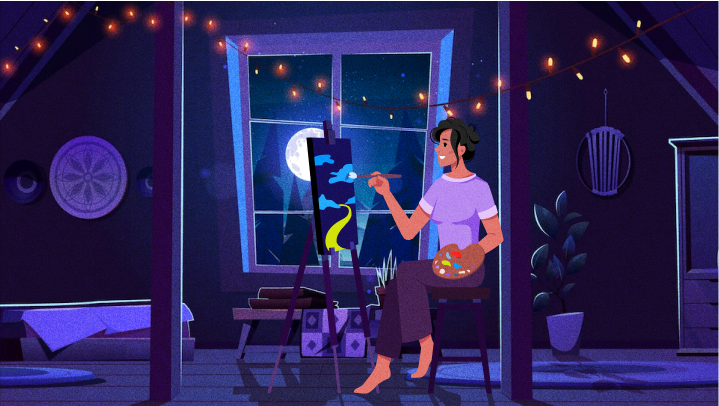

With the growing role of technology in design, professions like UI, UX, AI, Virtual Reality and Augmented Reality Design are gaining significant importance. Even designers from current fields such as fashion design, interior design, product design, transport design are evolving and technology innovation is playing an important role in each of these areas.
Over the years, changes have taken place in this profession too. In the past, designers in the corporate world were treated like artists with an occasional roleplay. Today, design is at the heart of everything. This shift is an outcome of better understanding of user experience and its favourable impact on the business.
So, how does designing stand out from other professions?
The most significant difference is that there are no right or wrong answers in Design. Design is a practice-based profession that is focused on solving real problems for users. Unlike other professions, the design thinking process can be applied to any area. Be it healthcare, engineering, IT, or any vertical; it is concerned with the design of systems and the larger goal is solely value creation.
Design over the years – the timeline
One of the most intriguing qualities of design through the decades is that the landscape continuously changes. Design keeps us guessing, it can be unexpected. Design keeps us on our toes, offering a mix of fresh new concepts blended with cyclical nods to trends of the past.
The first cave painting


The oldest known cave paintings date back to over 40,000 years old. These are the art of the Upper Palaeolithic period. These are found in both the Franco-Cantabrian region in western Europe, and in the caves in the district of Maros (Sulawesi, Indonesia).
The oldest type of cave paintings are really simple hand stencils and geometric shapes. From human figures to symbols to typography, we can see some fantastic examples of art in the Egyptian era. They perfectly portray their stories with typography, symbols and figures. The vibrant colours and use of contrast always inspire a designer mind.
Design was getting more visual and meaningful by that time. Similar kinds of cave paintings and sculptures can be seen in various caves and structures around the world.
The First Movie Poster
According to common belief, the first movie poster was created in 1890 by French painter and lithographer Jules Cheret. It was made for a short film called “Projections Artistiques”. Before 1910, most of the early film posters consisted of simple signs with block text announcing the title, producer and director, making it as short and simple as possible.
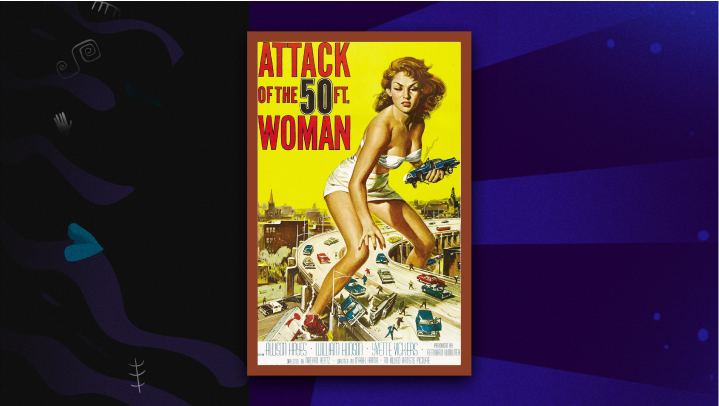

The First Website
The first web page went live on August 6, 1991. It was made by Tim Berners-Lee and was dedicated to information on the World Wide Web project. It was run on a NeXT computer at the European Organization for Nuclear Research, CERN.
It had no design, UI or UX in it. The era of web designers had just begun. In the 90’s designers had just started using colours, typography and images.
And over the next 3 decades, we have witnessed a huge revolution in design and innovation. Design is no longer creative work today. A designer is more responsible than ever for making his or her design useful over pretty. Design is now something that solves human problems. Design is no longer simply an eye-catching medium today.
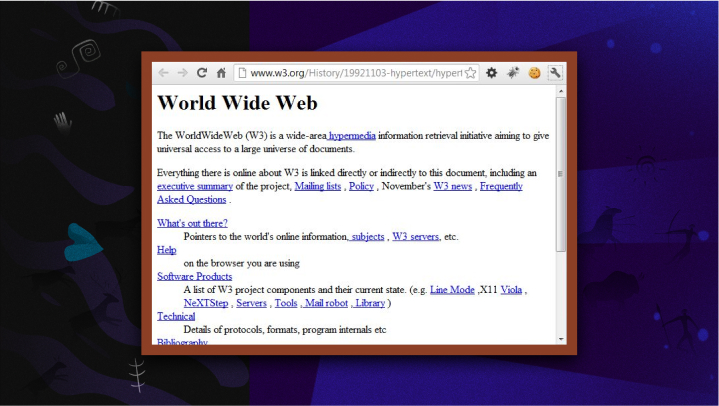

So, the timeline started with some stencils and rough figures inside a cave, transformed into a gorgeous language in golden Egypt, made its way into bold sculptures and then evolved as movie posters. This shows that creativity cannot be created, nor be destroyed; it simply gets transformed into different forms over the ages. And it evolves!
As time passes, designers have gradually mastered the power to use their creative skills in more useful products like posters, banners, print books, newspapers, movies etc. Over time people started using Typography, Symbols and Photography all together to express their creative thoughts.
Design Today
Today a designer plays many different roles, that include – User Experience (UX), User Experience Design (UXD), Customer Experience, User Interface (UI), or Graphical User Interface (GUI), Interaction Design (IDX).
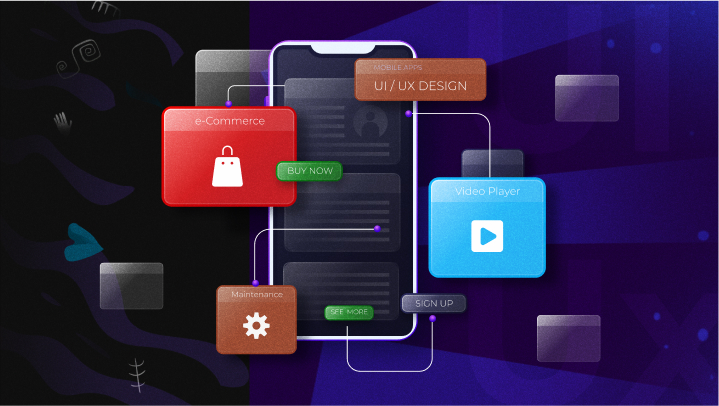

Apart from designing, they should also have knowledge of the following factors to make a product successful, like – Sketching, Wireframe, Mockup, Prototype, A/B Testing, Accessibility, Colour, Contrast, Card Sorting Method, Mindmap, Customer Journey Map (CJM), Onboarding, Information Architecture (IA), User Engagement, User-Centred Design (UCD), and many more. It never ends.
The point here is that every creative (Designer) and logical (Scientist and Inventor) mind is always trying to develop and invent new ideas that cater to the needs of the human race of that particular era. For me, this is the evolution of a Designer.
But now that we have designed and developed a lot of brilliant things, like we have done a great job with the best of web design, mobile and web applications, AR and VR designs out there. But this doesn’t mean that designers can now relax, take rest or retire!
“Necessity is the mother of invention” — we have all known this phrase. With time, human needs and comforts have been getting more and more priority. At the end of the day, it is all about the end-user. The future will be more challenging than ever and hence, a designer can never retire.
The Future
Apart from AR and VR, the future for the designer is filled with more uncertainty now in the age of Robotics, Artificial Intelligence and Machine Learning.
Let’s think about Wix ADI (artificial design intelligence), for example. Wix has developed an ADI which can create a website according to your requirement in real-time. Isn’t that great?
So what will happen to us designers in future? Will the industry really need a designer, when a computer and a 3D printer can do the job?
But the answer is “yes”. Whatever the situation be, a designer or creative mind must always make oneself ready for any kind of period. Demands make you learn new things every time. Since the start of the human age, our creative mind has always been trying different things based on the needs of that particular period. Designers should always make themselves ready for the future.
Time, method, study and tools change, but a creative mind will always be the same in every period. It doesn’t depend on any set of particular tools or medium to express art and design. Like from the cave paintings to today’s sketching on Ipads, creativity always finds its way to express itself.
D.Cult on our way to decide the ‘Future of Design’
D.Cult is a strategic design agency that has a team of design experts who manifest eccentric art by digging deep into cognitive science of billions to trigger emotions and for better human experience.
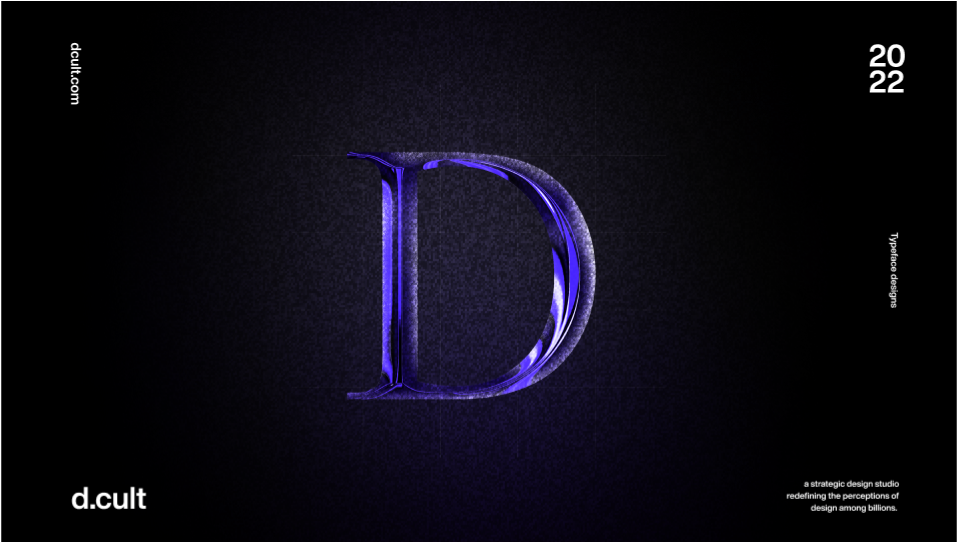

At D.Cult, we brainstorm and use constructive criticism to find out the best and worst ideas. This process means that we go behind the best idea once we have it, no matter if it comes from the oldest designer at the company or from the newest one, or from a person who is not a designer by profession.
Most companies in the current corporate world don’t think that way. They are hierarchical, which prevents innovative change and progress coming from younger ones. As design becomes an integral part of corporations and big businesses, we need to integrate this standardising element of design thinking into the way we work in order to continue to progress.
Understanding this, we prepare ourselves for the changing nature of the industry in order to create a stronger design for the future. We tend to be humble people, more interested in making an impact with our work rather than incorporating politics or making money.
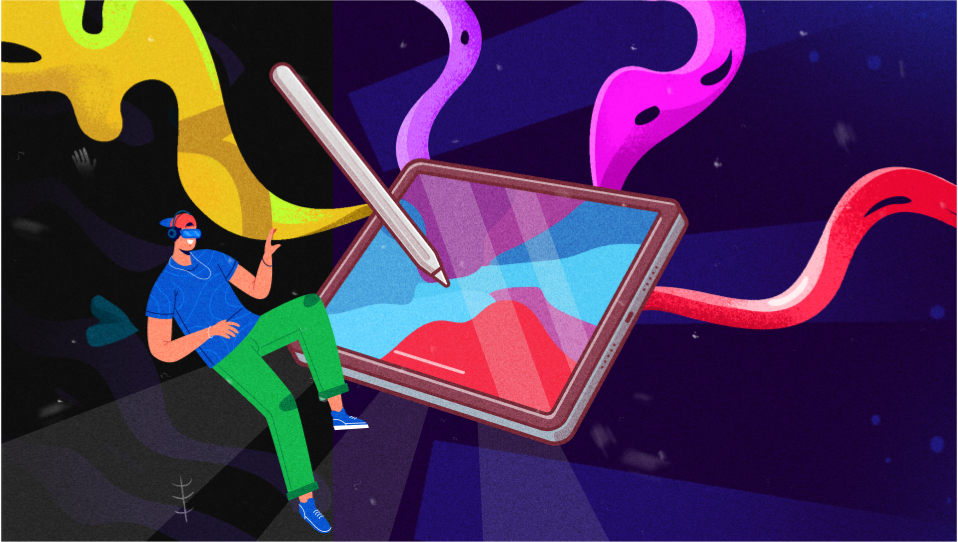

D.Cult has a bunch of designers who can push the limits of design to keep a constant focus on design innovation and create designs which take us to that future of ours. As design is not about how beautiful or complex it is, we focus more on how to communicate emotions through visuals in the simplest way, rather than concentrating on aesthetics. This helps our users to connect easily to those emotions, experience those feelings and achieve the desired outcome from the product they use.
Also, we understand that the entire process is not just about designing, it is more than that. We learn new skill sets, namely communication skills to speak our minds and present our points of view. Because, being unable to present our designs is as bad as not designing.
At D.Cult, we believe that product success occurs when users achieve their mental models of a specific product. To accomplish this, it is necessary to consider user psychology, behavioural science and empathy. We amalgamate these secret ingredients of ours in the designs we create and deliver it to the users.
We think futuristic and as our parent company Accubits is already in the path of making the Metaverse possible, we are all set to enter the Metaverse much before any design agency. The future is undoubtedly going to be a Metaverse world, so we thought, “why not we become the trendsetter by adding ourselves to the ‘Metaverse creators list’?
Also, as we have all the provisions from AI to blockchain and enough resources who have expertise and good knowledge in Metaverse, we are sure that we could become a metaverse creator!
Being able to think outside the box, create innovative and groundbreaking designs that help to shape the future, the ability to see the world through different perspectives and the skills to develop innovative solutions that help to improve the quality of life for all, makes our path to the future, effortless and more clear.
At D.cult, we believe about how future generations will accept the design patterns we follow or the experiences we try to implement through the apps and websites we build. The UIs or prototypes we create now are meant to be ageless and not go out of style. Behavioural patterns may differ from generation to generation. So we design for the future generations, not compromising the contemporary trends, while keeping the user preferences of the current generation in mind. Being rooted in design ethics, we never make any compromises in order to meet user expectations.
And yes, we can confidently say that D.Cult is all geared up to decide the future of design and we could foresee the future challenges of design and bring in solutions for it at the earlier stage.


